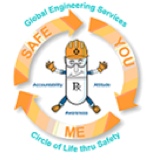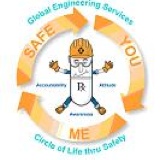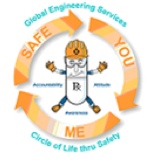Information
-
Audit Title
-
Prepared by:
-
Project / area inspected:
-
Inspectors:
-
Select date
Administration / Program:
-
First aid trained personnel on project, mutual aid contacted and verified.
-
Safety bulletin board with safe workdays posted and current safety information.
-
(Sub)Contractors competent persons identified.
-
CM weekly safety meetings held with (Sub)contractors supervision.
-
MSDS provided to Merck, maintain in field office.
-
Job Safety Analyses / risk assessment / method statement completed as needed / required.
-
Distracted working and outside influences are addressed in planning.
-
Daily task safety planning completed, and white board coordination meetings help.
-
SOR program in place, & feedback given to craft.
-
Emergency phone numbers posted in office areas and field.
-
Drinking water & wash facilities.
-
Toilet facilities available, accessible and clean.
Housekeeping:
-
Contractors inspect work areas daily.
-
Job site organized, not cluttered
-
Walking surfaces clear, clean, trip hazard eliminated
-
Trash / construction debris emptied regularly, disposal area neat, receptacles available.
-
Nails, scrap metal / wood picked up from previous days
-
Materials storage, proper segregation, stacked properly, chocked, no danger of falling.
-
Site perimeter maintained
Personal Protective Equipment PPE:
-
Hard hats, safety glasses, class II high visibility work vest, safety toe work boot, task appropriate gloves meets GES requirements.
-
Safety glasses with secure side shields being worn.
-
Face shields / goggles worn where appropriate
-
Hearing protection used where appropriate
-
Glove program in effect & meets GES requirements
-
Respirators / dust mask worn where appropriate, program in place, fit test etc
Fall Protection:
-
100% fall protection used above 6 feet (EU 2 m)
-
Full body harness worn (incl. high reaches) inspection certificates available
-
Fall protection equipment in good shape and inspected
-
Anchorage points for fall arrest meet required ratings
-
Lanyards with shock absorbers and double locking clips
-
Perimeter guarding provided, perimeter cables or wire rope properly installed
Fire Safety & Emergency Procedures:
-
Proper fire extinguishers available and inspected
-
Used rags in labeled metal cans with cover
-
All walkways, stairs, access, egress free of combustibles
-
Trained fire watch on duty during hot work - area monitored after hot work completed
-
Workers know evacuation alarm signals and evacuation routes
-
First aid kit policy established and followed (CM or contractor provided)
-
Eye wash stations provided in field
-
Sprinkler heads unobstructed
-
Temporary heaters, ventilation, dehumidifiers, lighting properly installed
General Safety:
-
Work area barricaded, access limited
-
PPE signs posted near access points, safety posters, signage, banners in field
-
Flaggers for mobile equipment movements
-
Containers, chemical materials labeled (labels legible)
-
Fuels, flammable materials stored properly
-
Temporary lights provided where needed. Adequate task lighting provided as appropriate.
-
Temporary power provided, in good working order
-
Equipment / tools in good working condition
-
Equipment / tool guards in place, where needed
Ladders / Stairs / Scaffolds:
-
Proper types of ladders being used
-
Ladders in good operating condition, inspected and stored properly
-
Extension ladders tied off, and/or footed and secure, extended 36" (EU 1 m) above landing, 4/1 slope maintained
-
Stairs provided where needed >19" (EU >0.5 m), secured. Stairs greater than 4 risers equipped with hand rail
-
Scaffolds erected properly, mobile scaffolds with rollers locked when in use, all scaffolds tagged correctly,and inspected daily.
-
Holes / penetrations protected with secured covers labeled HOLE or barricaded. Hole cover removal / replacement procedure in place.
-
Backup alarms, horns on mechanized equipment
Welding, Cutting:
-
Compressed gas cylinders secured with chain, capped when not in use, separated flammable/oxygen by 20 feet or 30 min fire wall, hoses and cables in good condition, flash back equipped.
-
Hot work permit in use, fire watch established
-
combustible material within 35 feet of hot work cleared or covered.
-
Welding screens used where needed
Lifting / Rigging:
-
Lifting and crane area barricaded, no lifting over personal, rigger and Flagger in place
-
Crane usage approved, pre-lift checklist completed, operator certification on hand. Daily and annual crane inspection documented
-
Tag lines used to control loads
-
Rigging equipment used properly, in good condition
Excavation / Confined Spaces:
-
Trenches / excavations sloped properly or shored and barricaded
-
Adequate access in / out of excavations (max 25') (EU max 7.5 m)
-
Spoils, tools, etc kept 2 feet (EU 0.6 m) back from excavation edge
-
Soil classification identified
-
Ventilation used for confined spaces
-
Confined space; personnel properly trained
-
Confined space; retrieval equipment available and usedropriately
-
Confined space; standby attendant present, communication means available
-
Confined space; air monitoring (including continuous) performed
Motorized Equipment:
-
Mechanized equipment used properly
-
Proper inspections performed / documented
-
Rollover protection in place and maintained
-
Seat belts used by all operators
Electrical Safety:
-
Cords in good condition, no cuts or repairs W / tape cables secured and off floor to minimize trip hazard
-
All electric extension cords inspected within last month (color coding)
-
GFCIs used for lead cords, GFCIs tested monthly
-
Grounding in working order on power tools, equipment
-
Temp electrical panels labeled, grounded
-
Conduit tightly connected to junction / outlet box, all breakers labeled and field outlets w/ circuit#
-
Adequate illumination
-
Temporary wiring; power / lighting isolated from building structure and not presenting trip hazard
-
Precautions taken where overhead lines are present, no work within min 20' (EU 6 m) clear
Hazardous Work (Permits):
-
Required permits completed properly, posted
-
Fire watch present for high energy (class A) hot work
-
Flammable / combustible materials removed from hot work area
-
Hazardous energy sources locked out properly
Environmental:
-
Containment for petroleum products adequate and in good condition (no debris, rainwater accumulated)
-
Petroleum tank / containment inspections and inventory adequately documented
-
Storm sewers protected
-
Threading machine catch box in place
-
Drip pans in place for equipment such as generators and welders
-
Containers labeled & closed when not in use
-
Chemical storage away from storm sewers and on impervious surface
-
Erosion and sedimentation control at project site (silt fences, tarps, mulching, as necessary)
-
Roll-offs labeled (contents, date waste first placed in container, designated non-haz or hazardous waste), covered and in good condition.
-
Appropriate residual waste handling, accumulation and disposal
-
Lay down in appropriate areas (not on unimproved landfill)
-
Dust generation minimized / controlled
Other / Miscellaneous:
-
Safety culture measurement plan in place. (Hearts and minds)
-
Safety surveys are being done to gain feedback.
-
Safety mentoring program is in place
-
Comments and Notes:








